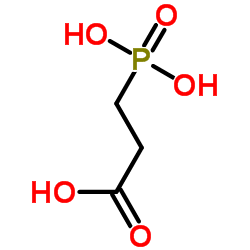Inclusion of ionization states of ligands in affinity calculations.
Serena Donnini, Alessandra Villa, Gerrit Groenhof, Alan E Mark, Rik K Wierenga, André H Juffer
文献索引:Proteins 76(1) , 138-50, (2009)
全文:HTML全文
摘要
When estimating binding affinities of a ligand, which can exists in multiple forms, for a target molecule, one must consider all possible competing equilibria. Here, a method is presented that estimates the contribution of the protonation equilibria of a ligand in solution to the measured or calculated binding affinity. The method yields a correction to binding constants that are based on the total concentration of inhibitor (the sum of all ionized forms of the inhibitor in solution) to account for the complexed form of the inhibitor only. The method is applied to the calculation of the difference in binding affinity of two inhibitors, 2-phosphoglycolate (PGA) and its phoshonate analog 3-phosphonopropionate (3PP), for the glycolytic enzyme triosephosphate isomerase. Both inhibitors have three titrating sites and exist in solution as a mixture of different forms. In this case the form that actually binds to the enzyme is present at relative low concentrations. The contributions of the alternative forms to the difference in binding energies is estimated by means of molecular dynamics simulations and corrections. The inhibitors undergo a pK(a) shift upon binding that is estimated by ab initio calculations. An interesting finding is that the affinity difference of the two inhibitors is not due to different interactions in the active site of the enzyme, but rather due to the difference in the solvation properties of the inhibitors.
相关化合物
| 结构式 | 名称/CAS号 | 分子式 | 全部文献 |
|---|---|---|---|
 |
3-膦酸基丙酸
CAS:5962-42-5 |
C3H7O5P |
|
Design of a metal primer containing a dithiooctanoate monome...
2011-01-01 [Dent. Mater. J. 30(3) , 300-7, (2011)] |
|
Effects of a newly designed HEMA-free, multi-purpose, single...
2011-01-01 [Dent. Mater. J. 30(5) , 616-25, (2011)] |
|
Cytocompatibility assessment of chemical surface treatments ...
2013-11-01 [J. Biomed. Mater. Res. A 101(11) , 3301-10, (2013)] |
|
Synthesis, chiral high performance liquid chromatographic re...
2010-05-13 [J. Med. Chem. 53(9) , 3454-64, (2010)] |
|
Antibody-conjugated soybean oil-filled calcium phosphate nan...
2006-11-01 [J. Microencapsul. 23(7) , 769-81, (2006)] |